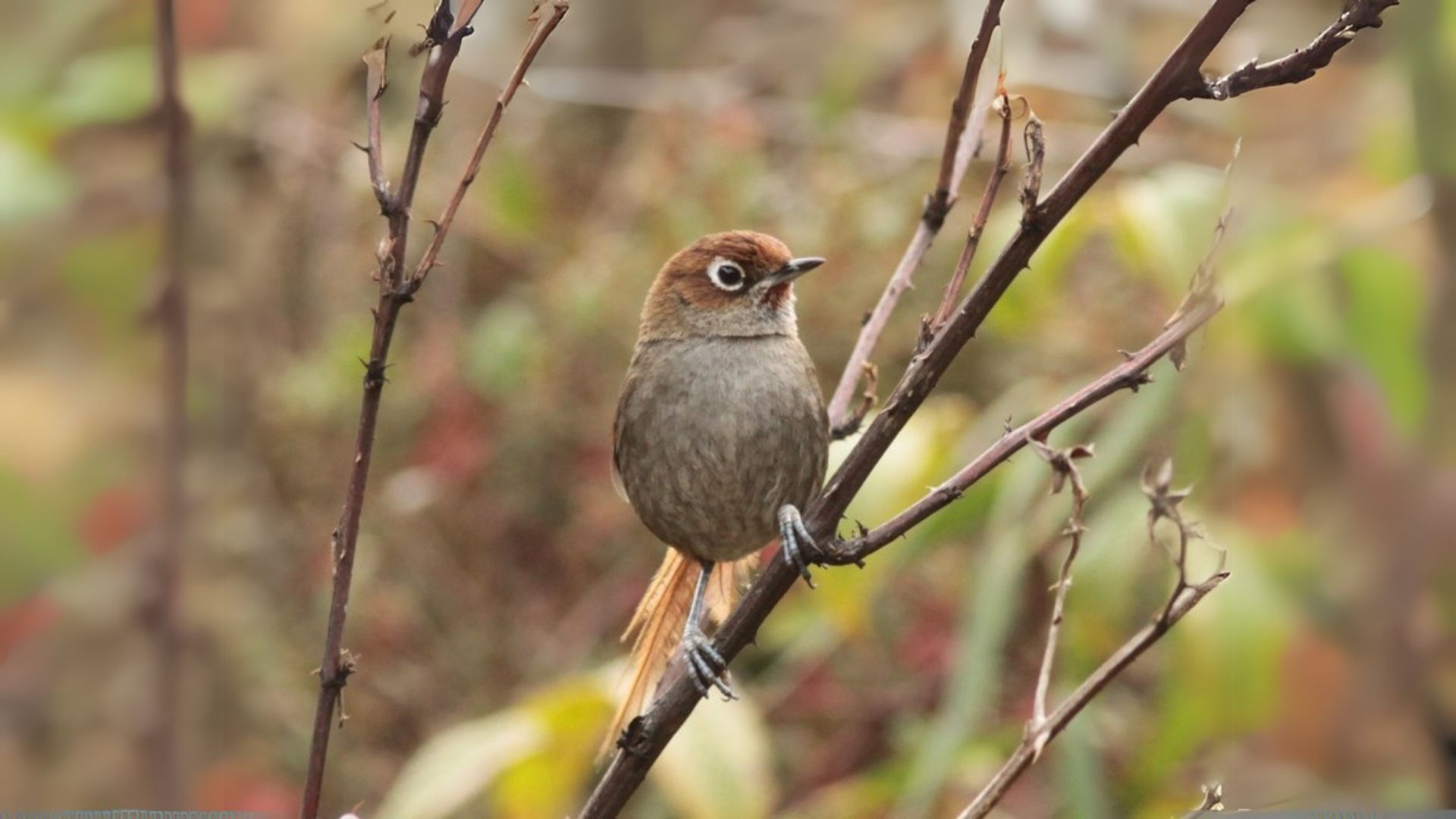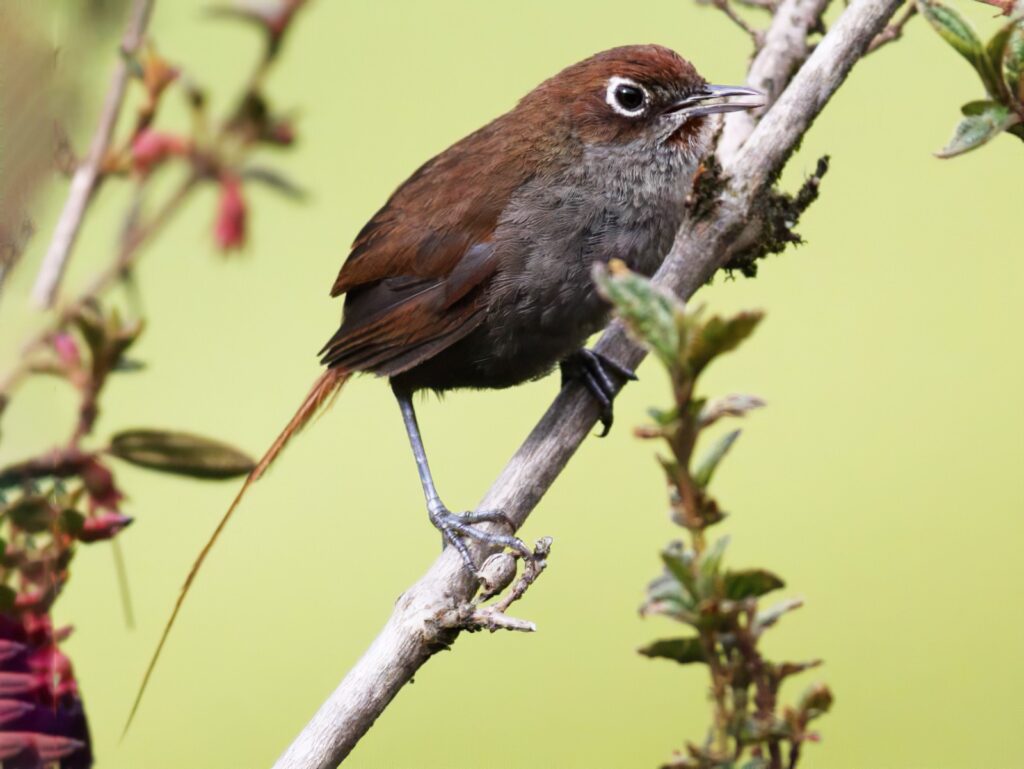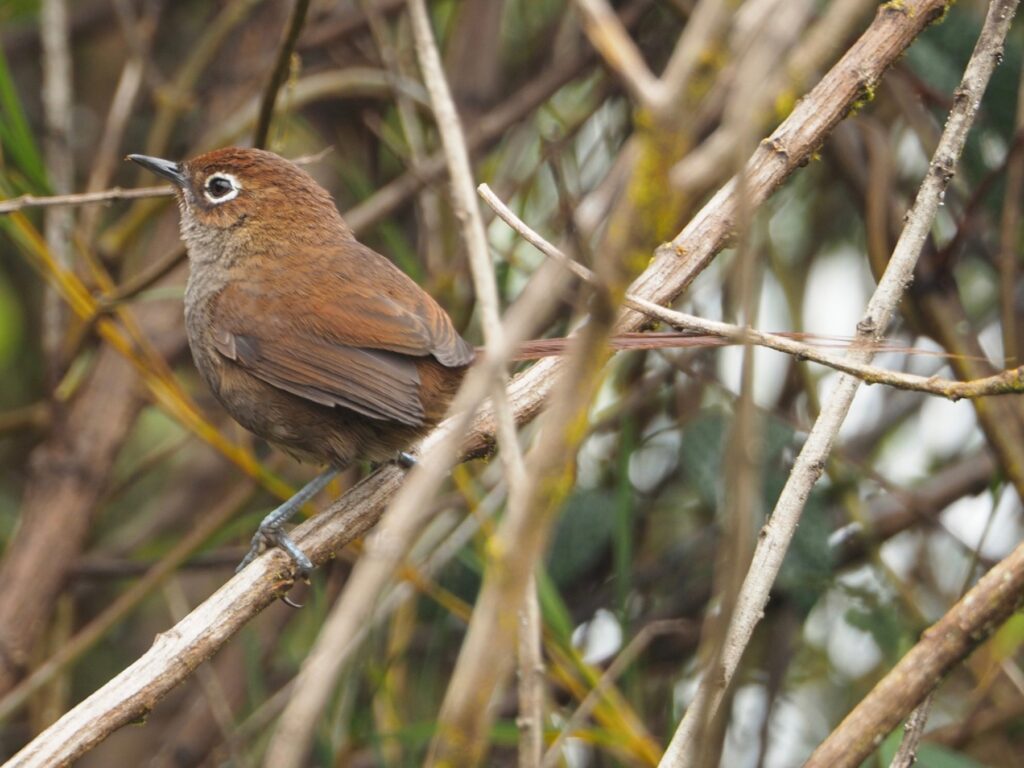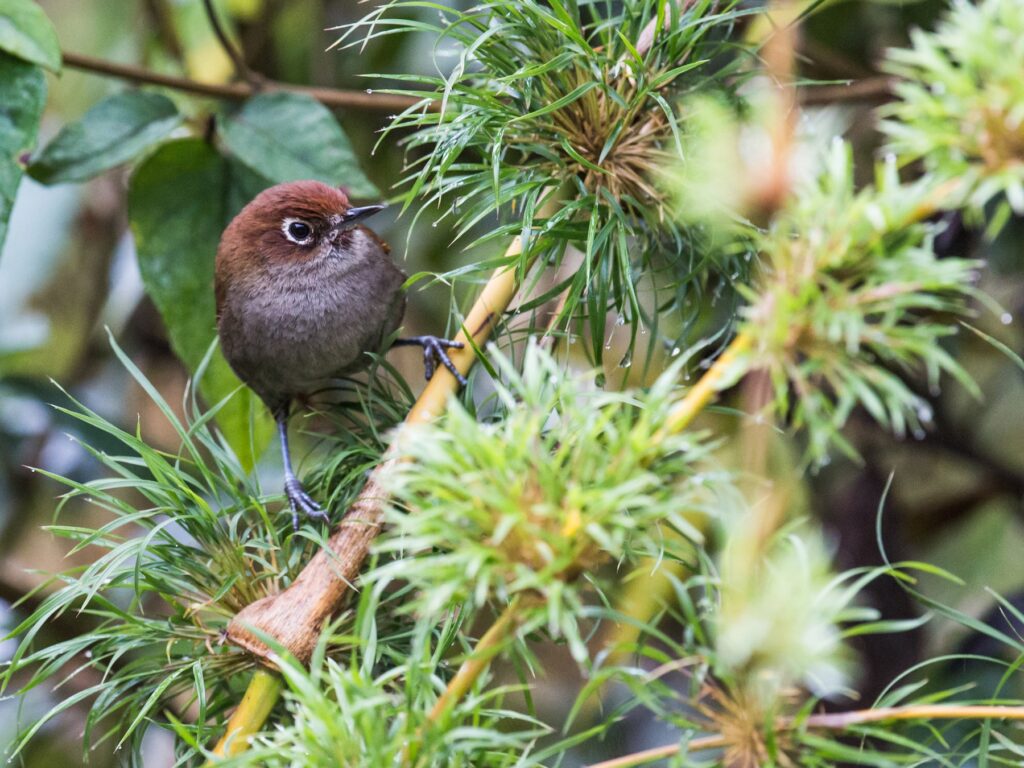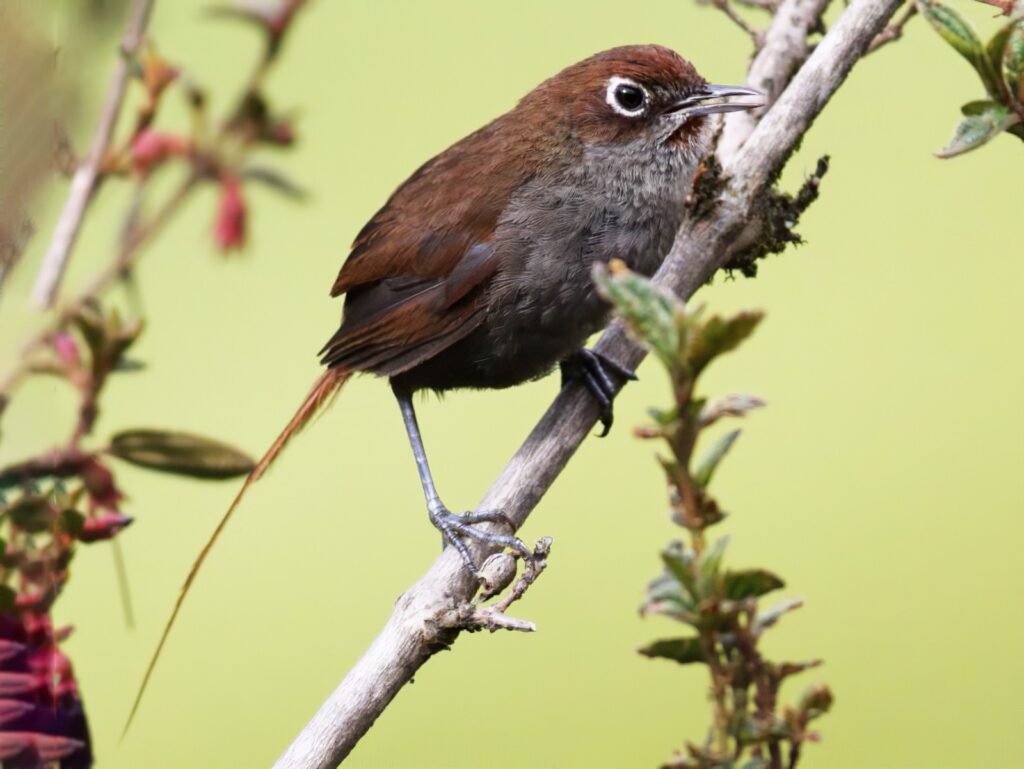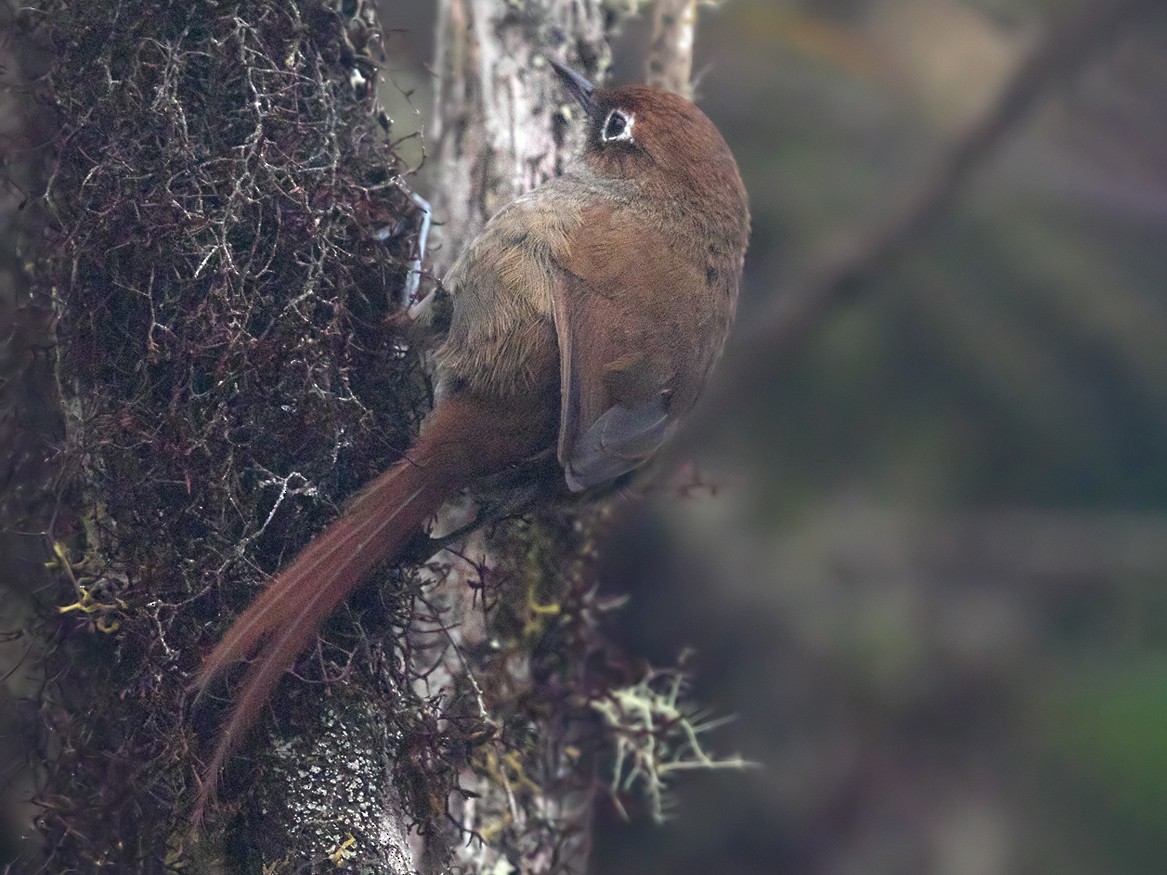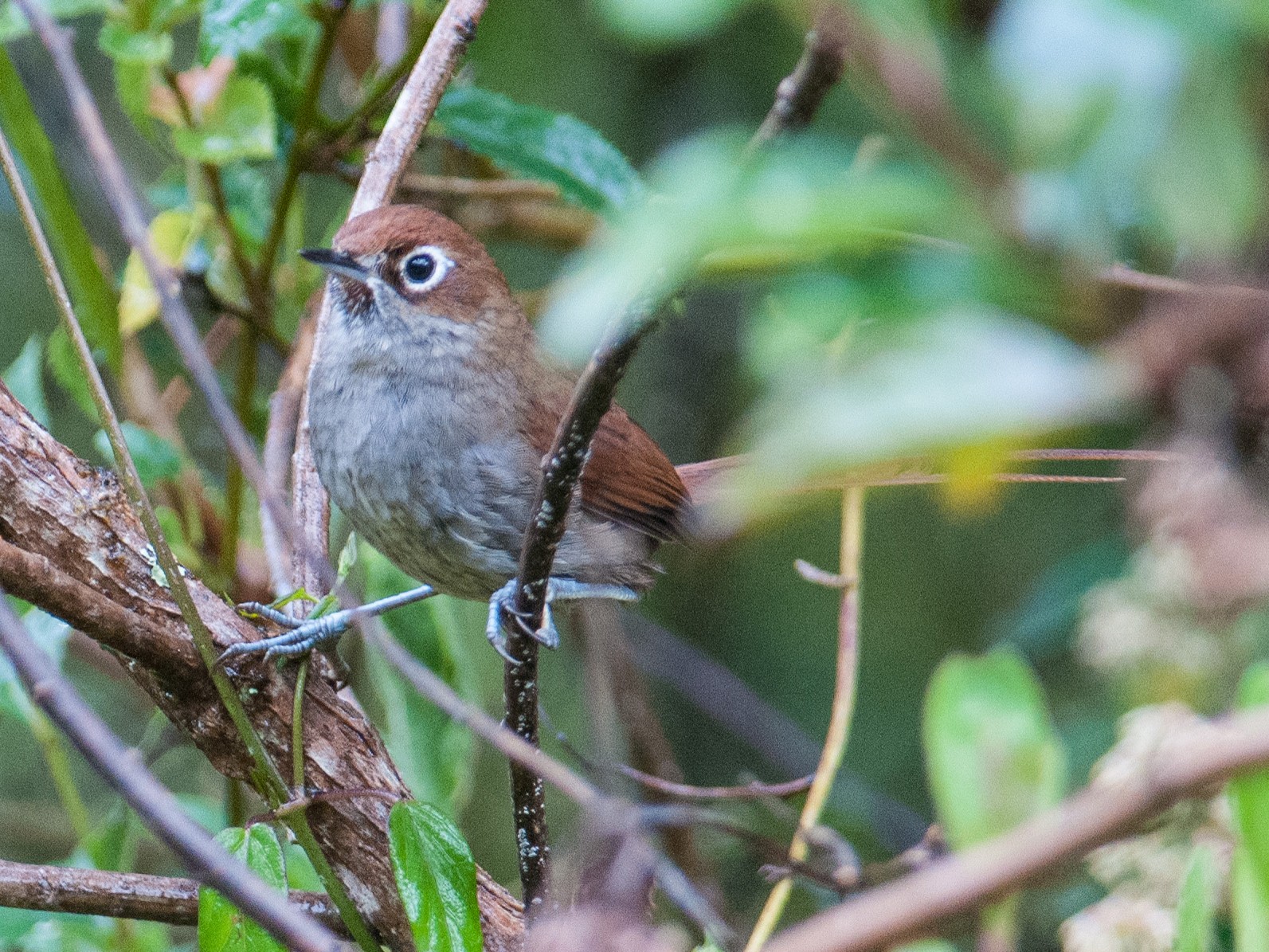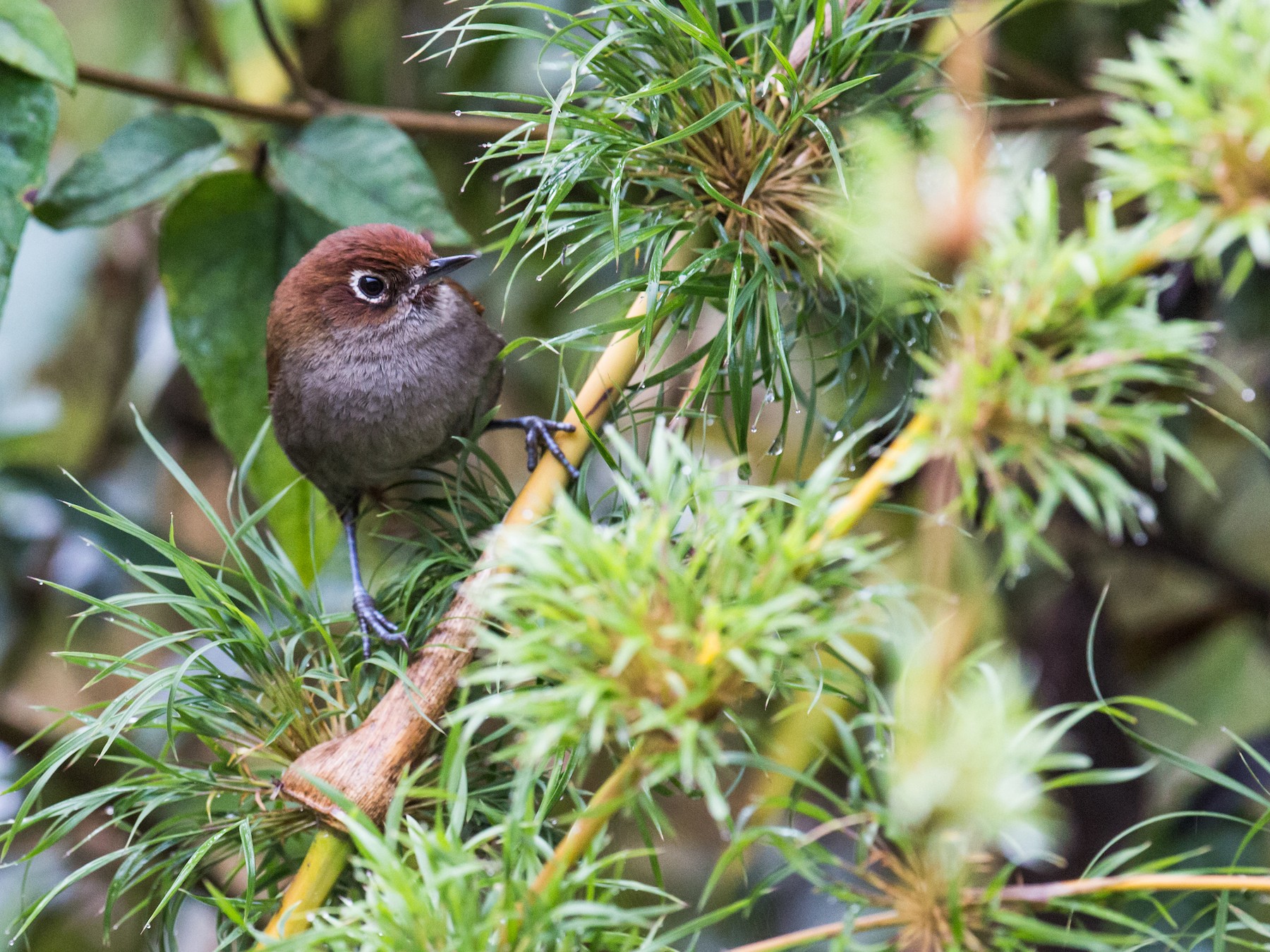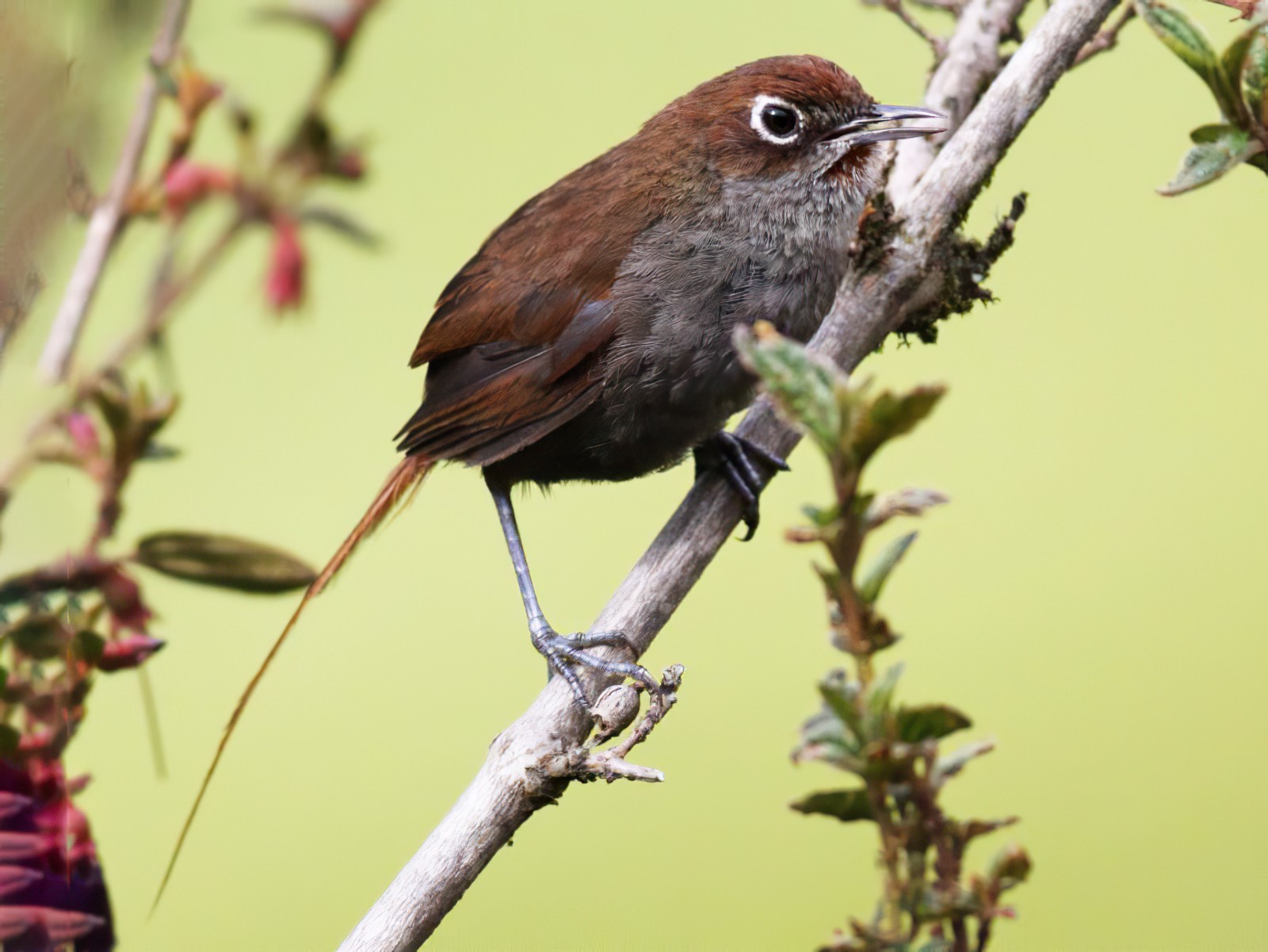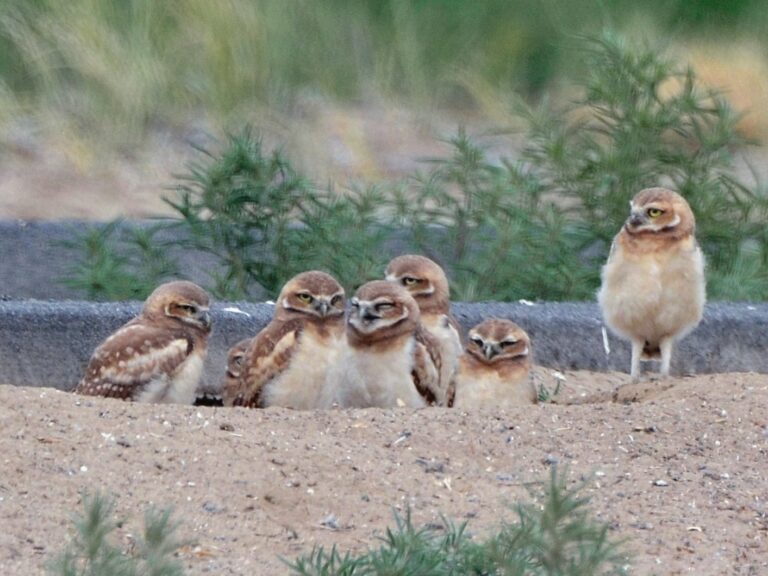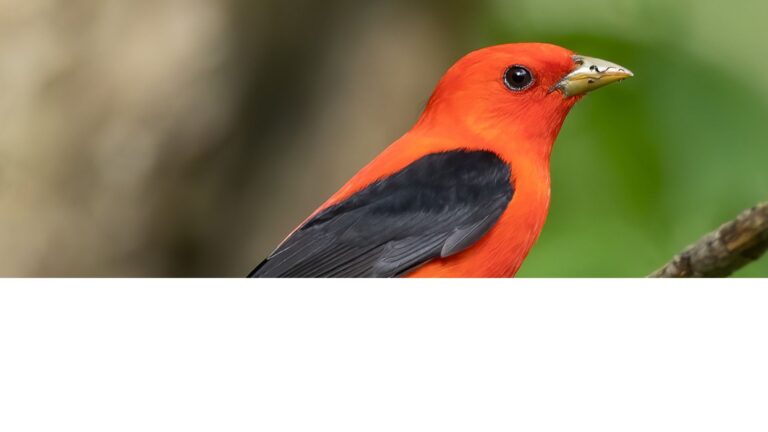Eye-ringed Thistletail: The Remarkable Bird of the Andes
The Eye-ringed Thistletail, a species which is only found in a very small area of central Peru, is really quite remarkable. It stands out thanks to its bold eye-ring and striking plumage—always a thrill to spot in the mountains, the next time your climbing a mountain in central Peru…
You’ll mostly find this species in the Andes, way up in the high-altitude zones. It’s adapted in all sorts of ways to survive and even thrive where the air gets thin and the weather’s unpredictable.
As a Furnariidae family member, the Eye-ringed Thistletail shows off some quirky traits that make it different from its relatives. Its calls and feeding style say a lot about how it fits into its world. If you want to spot one, knowing its favorite habitats and where it hangs out can really help. It’s not the easiest bird to find, but that’s half the fun, isn’t it?
Key Takeaways
- The Eye-ringed Thistletail is easy to pick out thanks to its eye-ring and unusual plumage.
- It lives mostly in the high Andes.
- Protecting its habitat is crucial if we want to keep seeing this bird around.
Taxonomy and Classification
The Eye-ringed Thistletail’s classification tells us where it fits in the bird family tree. Scientists focus on its scientific name, its place in the Asthenes genus, and how it stacks up against similar birds.
Scientific Naming and Synonyms
Its scientific name is Asthenes palpebralis, which nods to those eye markings that make it so recognizable.
It used to go by Schizoeaca palpebralis—taxonomy can get messy like that. “Palpebralis” comes from Latin for “eyelid,” which makes sense if you’ve seen its face. Researchers these days lean toward Asthenes because genetic studies show that’s the better fit.
Genus Asthenes and Taxonomic Relations
This bird belongs to the Asthenes genus, tucked inside the Furnariidae family. Thistletails like this one get grouped with canasteros, including birds like the Junin Canastero and Cordilleran Canastero.
Most Asthenes species are small or medium, and they’re built for South America’s varied habitats. They tend to share body shapes and behaviors with their wood-loving Furnariidae cousins. Taxonomists keep digging into the Asthenes family tree, and honestly, new genetic info might shake things up again soon.
Comparison with Related Species
The Eye-ringed Thistletail shares its home and some looks with other species nearby. It’s often compared to the Canyon Canastero and other regional thistletails.
Even though they’re all family, the Eye-ringed Thistletail has its own thing going on in the elfin forests of Ayacucho, Peru. You’ll notice differences in their calls and how they nest if you pay close attention.
Spotting these differences helps ornithologists figure out what each species brings to the ecosystem. And, not to sound alarmist, but habitat loss is a real concern for some of these birds.
Physical Description and Identification
The Eye-ringed Thistletail has a look that’s hard to miss, at least if you know what to watch for. Its plumage, streaks, and the resources out there for ID make it a favorite among birders and researchers.
Distinctive Features
This bird’s got some pretty bold facial markings. The eye ring is the main giveaway, really popping against the rest of its face. It’s got a chunky little body, short wings, and a tail that matches. The bill is strong and curved just enough to help it hunt for food.
Plumage and Streaking
Its feathers mix browns, olives, and grays, which helps it disappear into the background. The back is streaked with fine stripes—handy for IDing it out in the field.
Underneath, it’s usually lighter, with faint streaks you might miss unless you’re looking closely. Those patterns really help set it apart from other thistletails.
Images and Visual Resources
If you want to get a better idea of what the Eye-ringed Thistletail looks like, you’ll find loads of images and videos online. Stock photos and illustrations show it in all sorts of natural poses.
Those visuals highlight the eye ring and plumage details. Honestly, they’re a must for anyone trying to get the ID right. Images and videos make learning about this bird way easier, especially if you’re new to birdwatching.
Habitat and Distribution
The Eye-ringed Thistletail sticks to certain forest spots in the Andes. Its range and habitat choices matter a lot for anyone hoping to see one—or to help protect it.
Geographic Range
You’ll only find this bird in Peru, mostly in the central Andes. Look for it in places like the Andamarca Valley and around Satipo Road. It hangs out where tropical and temperate zones overlap, so it’s really tied to those unique high-altitude ecosystems.
Elevation and High Altitude Habitats
It usually lives between 2,800 and 3,600 meters up. That’s high enough to make you catch your breath, but the bird seems to love it.
Those elevations come with thinner air and colder temps, but they also offer a rich mix of plants and insects. The Eye-ringed Thistletail has figured out how to make that work.
Andean Elfin and Cloud Forests
This thistletail mostly calls Andean elfin forests and cloud forests home. These spots have the food and nesting sites it needs.
The thick greenery is packed with insects—a big part of its diet. Dense foliage also keeps it safe from predators and the worst of the weather. Keeping these forests intact is absolutely crucial, since deforestation and other disruptions put the bird at real risk.
Behavior and Ecology
The Eye-ringed Thistletail has some pretty interesting behaviors. If you’re into birdwatching, knowing how it acts can make all the difference.
Feeding Habits
Insects and small invertebrates make up most of its menu. It pokes around on the ground and in low shrubs, using that sharp bill to dig through soil and leaves. Sometimes it adds seeds and berries, which seems to depend on what’s available that season. Its eating habits help balance insect populations and spread seeds around.
You might spot one foraging alone or with a couple of buddies. They’re not always easy to see since they prefer thick vegetation.
Vocalizations and Communication
The Eye-ringed Thistletail has a call that’s pretty hard to miss—a series of whistled notes that carry far. These calls matter most during mating season when males claim their turf. Birds also use them to keep in touch with the group.
If you’re out looking, listening for these calls is probably your best bet. The rhythm and clarity can tip you off that one’s nearby.
Reproductive Behavior
Breeding usually happens in the wet months, when food is easier to find. Males put on a show, flashing their plumage and singing to impress females. Nests are hidden away in dense vegetation. The female lays two or three eggs, and both parents help keep them warm.
Once the chicks hatch, the parents feed them loads of insects. This teamwork boosts the odds that the young make it. Birders sometimes try to find these nests just to watch the parents in action.
Conservation Status and Threats
The IUCN lists the Eye-ringed Thistletail as Least Concern. That’s good news for now, but habitat loss is still a big worry.
IUCN Assessment and Least Concern Status
The International Union for Conservation of Nature (IUCN) says this bird isn’t in immediate danger of extinction. Its population seems stable, and it covers a decent range in South America. Still, it’s smart to keep an eye on things, since changing environments could shake up those numbers.
Impact of Habitat Loss
Habitat loss is probably the biggest threat facing the Eye-ringed Thistletail. Deforestation and farming push into its territory more every year.
It likes grasslands and shrubby areas—places that are disappearing fast. As its home shrinks, the birds feel the squeeze, and numbers could start to drop. Protecting what’s left and encouraging better land use are the best ways to keep this species around.
Associated Species and Birding Locations
The Eye-ringed Thistletail isn’t alone out there. It shares its home with some fascinating neighbors, which makes birding trips to these areas even better.
Sympatric and Look-Alike Birds
If you’re exploring its habitat, you might run into some similar or coexisting birds. Watch for these:
- Bay Antpitta: Blends into the undergrowth with brown plumage, making it tricky to spot.
- Golden-collared Tanager: This one’s flashy, with bright colors that stand out in the same spots as the Thistletail.
- Ochraceous-breasted Flycatcher: Zips through shrubby areas, often turning up where you’d find the Thistletail too.
Seeing these birds adds a lot to the experience and gives birders plenty of chances to compare and learn.
Key Birding Locations
If you’re after the Eye-ringed Thistletail, you’ll want to zero in on a couple of standout spots that birders always talk about. These places pop up again and again for their wild variety of birds.
- Satipo Road: People flock here for the sheer biodiversity. You get a mix of elevations and habitats, which keeps things interesting.
- Andamarca Valley: This valley’s thick greenery makes it a prime place to look for all sorts of birds, including the elusive Eye-ringed Thistletail.
Opportunities and Resources for Birders
Want to make the most of your trip? Local guides run tours that focus on top birding zones, and honestly, it’s worth checking them out if you’re not sure where to start.
Online platforms spill the beans on hotspots and offer handy ID tips. If you’re into community vibes, local birding clubs can really up your chances of spotting a Thistletail and learning from others.
Sometimes you’ll see deals—like 30% off guided tours—which can make things a bit easier on your wallet. Jumping into the birding scene often leads to new friends and unexpected finds.
Frequently Asked Questions
Let’s run through some of the usual questions about the Eye-ringed Thistletail. We’ll cover where it lives, what it eats, how to spot it, how it compares to similar birds, and what’s going on with its conservation and breeding.
What habitat does the Eye-ringed Thistletail typically inhabit?
You’ll usually find the Eye-ringed Thistletail tucked away in dense grasslands or shrubby patches inside the Andes’ montane forests. It seems to like hanging out between 2,400 and 3,200 meters up.
Can you describe the diet of the Eye-ringed Thistletail?
Mostly, it eats insects and other tiny invertebrates. You’ll catch it foraging low, poking around in grasses and leaves for snacks.
What are the identifying characteristics of the Eye-ringed Thistletail?
The eye-ring’s the giveaway—can’t really miss it. Its plumage runs brownish, and the tail is short, so it stands out if you know what to look for.
How does the Eye-ringed Thistletail differ from the Puna Thistletail?
Look for that eye-ring and some subtle differences in the feather colors. Those little details help you tell it apart from the Puna Thistletail when you’re out in the field.
What is the conservation status of the Eye-ringed Thistletail?
People keep an eye on its conservation status, since losing habitat is a real concern. Honestly, protecting where it lives is pretty important if we want to keep seeing it around.
What are the mating and breeding habits of the Eye-ringed Thistletail?
The Eye-ringed Thistletail puts on some pretty elaborate courtship displays when mating. They don’t just wing it—there’s a bit of a show involved.
They usually breed during the wet season. You’ll find their nests tucked away in hidden spots, probably to keep those eggs safe from hungry predators.
